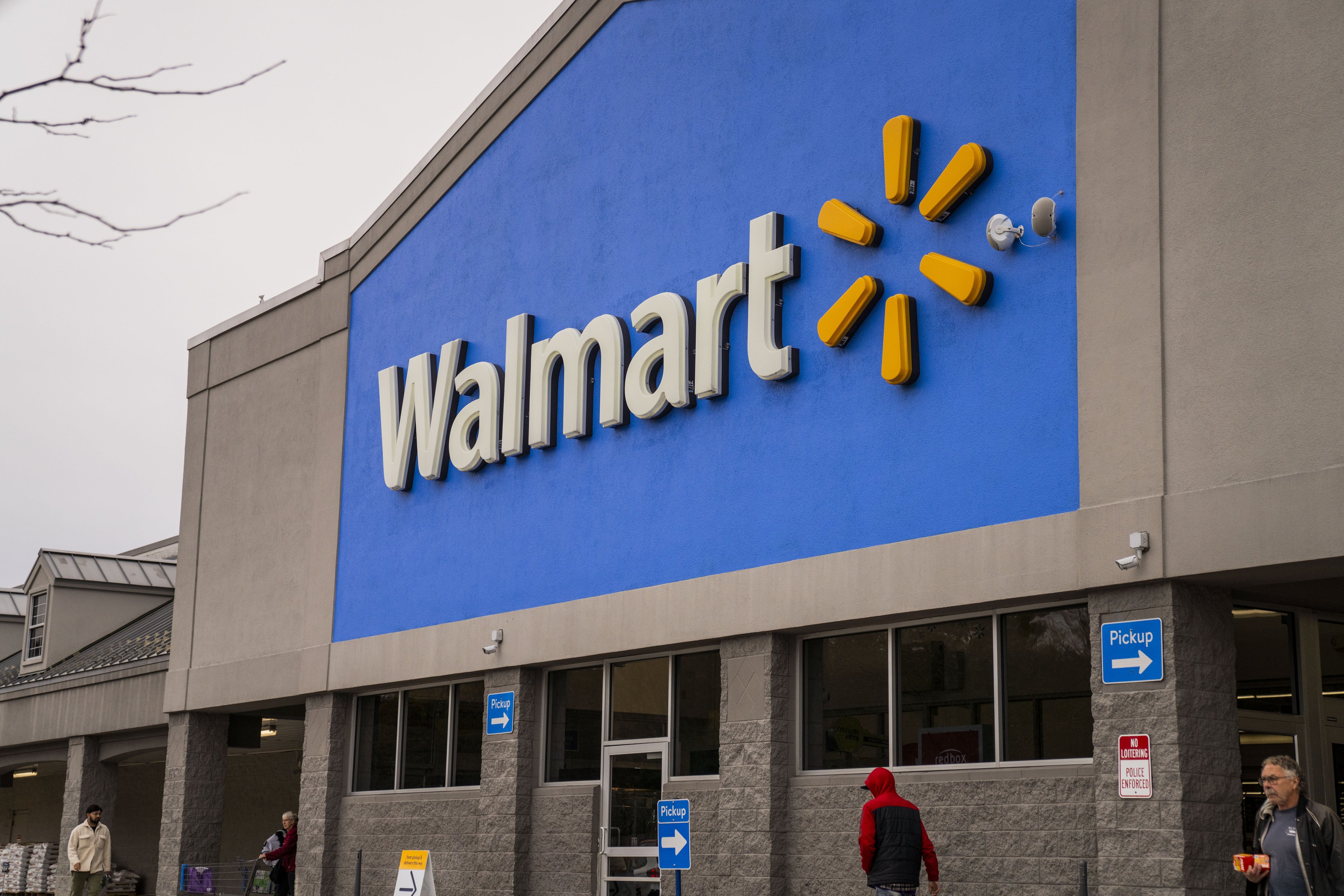Shares of Wal-Mart (WMT +0.64%) are up nearly 10% year to date, with the stock currently trading around its 52-week high of $85 a pop. However, as seasoned investors, we know that past performance is no guarantee of what's to come. This is particularly true in the increasingly competitive retail space. So, where is Wal-Mart's stock headed from here? Below, three Motley Fool contributing analysts explain one major threat they believe could derail the big-box store going forward.
Jeremy Bowman: Of all the problems dogging Wal-Mart, its negative image seems to be the most persistent. Wal-Mart is reviled for all sorts of reasons, including poor treatment of its workers, anti-competitive practices, violations of the Foreign Corrupt Practices Act, and gender discrimination. Because Wal-Mart is so big, it is often a target and scapegoat for unions and their ilk, but that's exactly why Wal-Mart should do more to burnish its image. That negativity produces very real consequences for the company's bottom line as it turns off a large number of potential customers.
Wal-Mart's locations overwhelmingly skew to more conservative parts of the country. For example, it has just 106 Supercenters in California, but 345 in Texas, and its attempts to expand to the more labor-friendly parts of the country have often been met with resistance or outright denial. Wal-Mart opened its first stores in Washington, D.C., last year, but not until the mayor vetoed a bill that would have required the retail giant, and other large-footprint stores, to pay a minimum of $12.50 hour.
New York City, with a population of over 8 million, still has no Wal-Marts, and in June, Mayor Bill De Blasio said the company was unwelcome in his city, arguing that it kills good jobs. Previously, the city council and unions had rebuffed Wal-Mart's attempts to open in the five boroughs.
Fear and aggression toward Wal-Mart also left it with few defenders during its multiple attempts to enter the banking industry, an aspiration which was resurrected in September with GoBank. And Wal-Mart even acknowledges that consumers "may not be receptive to our presence in a market" as one of its risks in its 10-K. In other words, improving its public image would go a long way to creating more future Wal-Mart customers.
Rich Duprey: Wal-Mart reported its first bump in same-store sales in two years last month when it said third-quarter comps rose 0.5%, helping to fuel a near-15% gain in its stock. But it's still flying into headwinds in a highly competitive Christmas season, and there are other challenges ahead, too.
As the retail king, Wal-Mart's footprint has dominated the landscape. Literally. Its supercenters are a sprawling 180,000 square feet on average. But consumer tastes are changing, and they're looking for convenience and accessibility. More local in look and feel. Wal-Mart's competitive edge is being challenged by the growth of dollar store chains, neighborhood supermarkets, and even convenience stores.
Dollar Tree (DLTR +2.08%) and Dollar General (DG +0.89%) continue to roll out refrigerators and freezers in their stores, increasing their value proposition to consumers. Local grocery stores like Fairway Group (NASDAQ: FWM) and Sprouts Farmers Market (SFM +2.00%) are popping up offering fresher, more organic grocery options. And convenience stores themselves, by name, have the benefit of being located in the consumer's neighborhood and offering a wider variety of food options with grab-and-go convenience.
Wal-Mart recognizes this and is hurriedly building out a portfolio of smaller format stores. Its Neighborhood Markets concept will receive the most attention. They are 42,000 square feet on average and give customers an experience similar to a local grocery store. Comps sales there increased 5.5% last quarter with strong performances in its pharmacy and consumables section.
Although Wal-Mart opened just 28 new Neighborhood Markets in the third quarter, it is ramping up their proliferation. It will open over 100 new Neighborhood Markets in the fourth quarter as well as 70 even smaller footprint stores under the same banner that range in size from 12,000 to 15,000 square feet.
If Wal-Mart doesn't successfully engage the threat from its smaller, more local competition, the chance of building on the success of this past quarter will make it a one-off event.
Tamara Walsh: As the world's largest retailer, Wal-Mart operates over 11,000 stores in 27 countries today. More than half of these stores are located outside of the United States. However, this outsized international exposure is one of the company's biggest threats because it leaves Wal-Mart vulnerable to myriad risks, including ongoing regulatory problems, geopolitical issues, and unfavorable foreign exchange rates.
International sales inched up just 1.7% during Wal-Mart's fiscal third quarter. Moreover, the company said fluctuations in currency exchange rates negatively affected net sales by $396 million in the period. Another problem is that "roughly three fourths of international stores operate in countries where Wal-Mart has been for more than 10 years, yet returns on assets have not meaningfully improved," according to Morningstar.
Wal-Mart said it would close around 30 under-performing locations in Japan in the quarters ahead. The retailer is now closing dozens of stores in Brazil, China, and Japan in an attempt to reinvigorate its overseas business. However, the company warned that there could be "unanticipated costs" associated with these closures.
There's no doubt management is trying to turn things around in Wal-Mart's international portfolio. However, these things take time. For these reasons, I believe Wal-Mart's international business is one of the biggest risks facing the retailer today.









